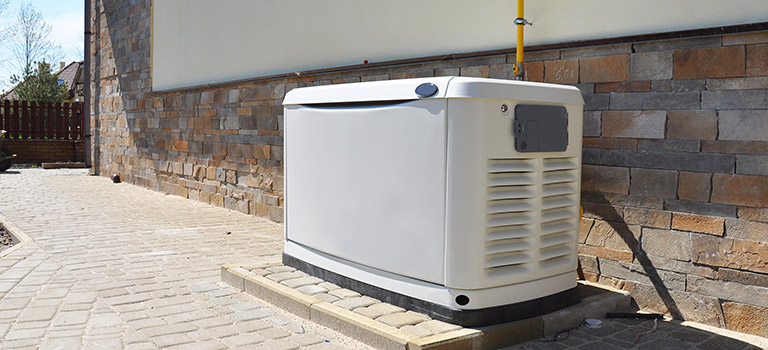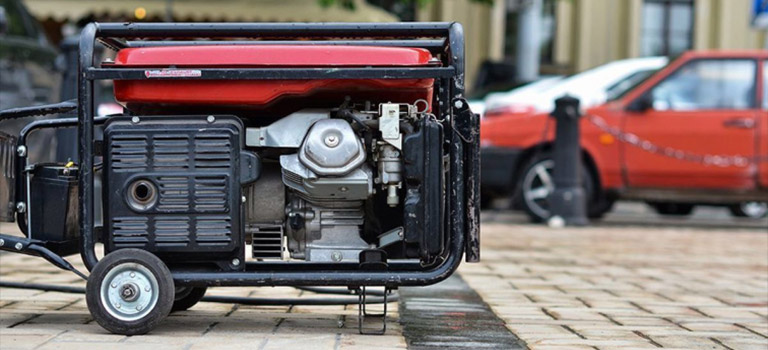Every year, thousands of Ontario homes find themselves without power due to downed power-lines, fallen trees and branches due to an accumulation of ice and snow. It should be noted that "power outages" aren’t limited to the winter months. The Toronto power-outage of 2003 left thousands of homes without power for hours and some cases days when The Northeast blackout of 2003 caused a widespread power outage throughout parts of the Northeast, Midwest and Ontario on August 14, 2003. So you can expect an outage at any time and the very reason why thousands of Canadians purchase standby generators to keep their homes and family's safe in the event of a power outage which seem to occur on a more regular basis. In a world where we rely heavily on a constant and reliable source of power, an emergency generator can give you the peace of mind you need. See below information you need to make an informed decision when it comes to installing a emergency generator.


Heavy Rainfall Compromises Your Electrical System
It’s raining and the weatherman says it’s going to continue raining. Heavy rainfall is great for greener lawns and free carwashes, but the excess water can compromise your electrical system, especially in the event of a basement flood.
What will I lose in the event of an outage?
Here is a short list of some typical things you may lose in an outage.
Refrigerator/Freezer
for food and / or medicines
Furnace
Air Conditioning
Lighting
inside and outside
Clean Water
for drinking and bathing
Sump Pump
Kitchen
and other appliances
Contact with the outside world
internet, radio, TV, etc.
Laundry
washing and drying clothes
Security Systems
Garage Door Openers
Fans
Medical Equipment
Charging Power Tools
for use during emergency and post-outage cleanup
Monetary losses
from temporary relocation, hotels, dining out, property damage, etc
What types of generators are available?
There are two types of generators homeowners can invest in, depending on their needs. These are: Standby Generators and Portable Generators.

Standby Generator
This generator is installed permanently beside the home and provides uninterrupted backup power for days at a time.
A standby generator is installed directly to the home’s electrical panel and is fueled by natural gas, liquid propane, or diesel.
A standby generator consists of a generator unit and an automatic transfer switch. The two work together to ensure that the backdrop power starts right away in the event of an outage.
The automatic transfer switch is disconnected from the utility power after detecting an interruption in service. The switch tells the generator to turn on and transfer power to the home's electrical panel.
The standby generator is powered from an internal combustion engine, which is fueled by the local natural gas supply. If natural gas is not available, liquid propane or diesel generators are available but will require refueling.
Once power is restored, the transfer switch will turn off the generator and reconnect the home to its utility power.
Like any mechanical device, a standby generator requires maintenance. After 24-48 hours of continuous use, a technician is required to change the oil and filter. Otherwise, this service should be performed 1-2 times (spring & fall) every year.

Portable Generator
A portable generator is a gas or diesel-powered device that provides temporary electrical power.
Homeowners can plug electrical appliances directly into the generator's sockets or the generator can be wired to a subpanel, which must be installed by a certified and licensed electrician.
Portable generators offer a limited supply of electricity, ranging from 2-4 outlets or a few specific circuits, when plugged into the panel.
This type of generator is designed for temporary use only. A portable generator requires manual operation and close monitoring when in use. This means there is no electrical backup if no one is home.
What do we recommend?
The reliability of a standby generator is priceless. A standby generator is a long-term solution that keeps your home running like normal when the power goes out. This is especially important for families powering medical equipment or home businesses.
CLICK HERE TO GET A QUOTEFive Reasons to Invest in a Standby Generator
Fast, automatic delivery of emergency power after powerline failure
Maintains the same comfort level, at home or at work, during an outage
Keeps an adequate food and water supply during extended power outages
Provides a permanent solution
Remain at home, in familiar surroundings during a storm or extended power outage
How to Install & Maintain a Standby Generator
The first step to installing a standby generator is a preliminary consultation from one of our experts.
Click here to request a preliminary consultation today.
All of our technicians are both licensed electricians and certified air-cooled generator maintainers.
| Maintenance Task |
Level 1 Semi Annual |
Level 2 Annual |
|---|---|---|
| Check engine oil and adjust as necessary |
|
|
| Check gas delivery system; tighten connections |
|
|
| Check air inlets and outlets for debris and clean as needed |
|
|
| Check battery electrolyte levels |
|
|
| Check battery terminals for corrosion |
|
|
| Check all battery and charger terminals for loose connections |
|
|
| Check engine accessory drive belts and replace as needed (parts not included) |
|
|
| Visually inspect unit for leaks, wear or damage; correct as needed |
|
|
| Change engine oil |
|
|
| Check spark plugs; clean, regap, or replace as needed |
|
|
| Perform 5-minute no-load test |
|
|
| Perform outage simulation test |
|
|
| Return unit to standby set-up for operation |
|
|
| Check unit wiring for loose connections and correct as needed |
|
|
| Check transfer switch safety devices |
|
|
| Replace air filter |
|
How many watts does it take to power my home?
Calculate how many watts you need
Step 1
Choose which devices you want to power
Step 2
Add the running watts listed for each device
Step 3
Record the starting watts listed for each device
Step 4
Select the one device with the highest starting watts and add that number to the total running watts of all devices to determine your total wattage requirement
| Devices | Running Watts | Starting Watts |
|---|---|---|
| Light Bulb | 60 watts | 0 surge watts |
| Colour TV | 500 watts | 0 surge watts |
| Sump Pump | 1,300 watts | 1,300 surge watts |
| Space Heater | 1,800 watts | 0 surge watts |
| Refrigerator | 700 watts | 2,200 surge watts |
| Central AC | 1,500 watts | 4,500 surge watts |
| Coffee Maker | 1,000 watts | 1,500 surge watts |
| Oven | 60 watts | 7,500 surge watts |
| Well Pump | 1,000 watts | 3,000 surge watts |
